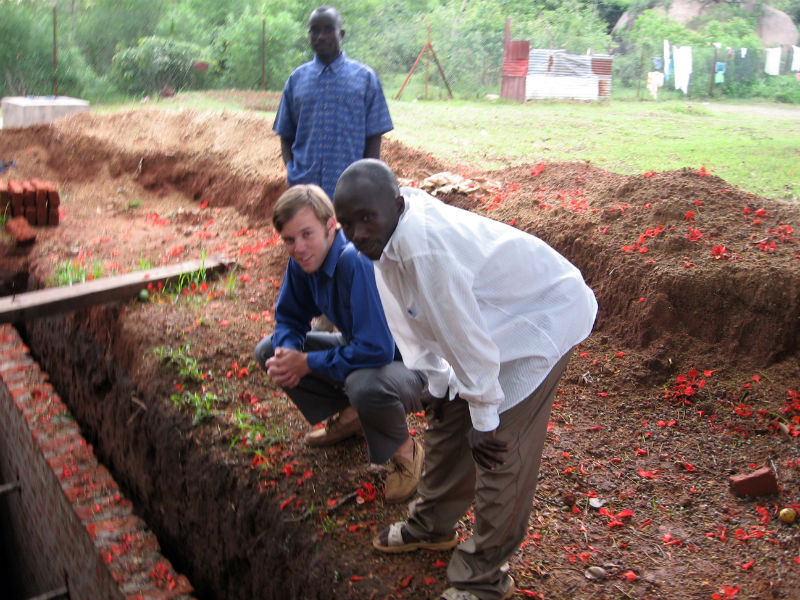Location
Complex A, Ngora County, Ngora District, Teso Sub-region, North-Eastern Uganda
Community Description Ngora District has a total population of 102,000. The area is rural, and the people depend on peasant farming and cattle keeping.
Ngora District has a total population of 102,000. The area is rural, and the people depend on peasant farming and cattle keeping.
Half of the population is under 15 years of age. The literacy rate is at 62% of the population above 10 years of age. Only 6% live in house units with permanent roof materials. 57% of households receive information by “word of mouth” and 39% have a radio set. 99% use firewood or charcoal for cooking.
There are several primary and secondary schools in the county, a primary teacher training college, a hospital with a nurses’ training school, vibrant trading centers and a township. However, less than twenty pupils pass in grade one at the national primary leaving examinations, and very few enter university.
Ngora County is adversely affected by climate change and environmental degradation. The population has suffered from two decades of insurgency and civil and armed conflicts. There is declining agricultural production, poor health and nutrition, sad memories and trauma of living in camps, and loss of property and human life. As life returns to normal, there is a need to fight the deprivation and to promote reconciliation, reintegration and psychological adjustment to new life.
The St. Anthony’s Health Center II, which serves the medical needs of the community and 3 neighboring schools, does not have adequate sanitation facilities.
Project Description
The project is to construct a latrine for the St. Anthony’s Health Center II. The structure will be built to accommodate four stalls, each with a separate door.
Health center staff already began the project by digging a pit 6 feet wide x 20 feet long x 10 feet deep.
The bottom of the pit was lined with concrete. The pit was walled with bricks up to flush with ground level (Plinth Wall). About 2,600 bricks and 20 bags of cement were used for this step.
 A solid concrete slab, reinforced with rebar and weld mesh, will be poured to create a top for the latrine
A solid concrete slab, reinforced with rebar and weld mesh, will be poured to create a top for the latrine
All of the waste will be retained within the latrine. A hole in the back will allow the sremoval of the waste.
The walls will be built with 1,300 bricks and 10 bags of cement, and will later be plastered and painted on the outside. 20 vent bricks will be placed at the tops of the walls to allow airflow.
The roof will use treated 2 x 3 and 2 x 4 beams to hold the 7 iron sheets. Because wood beyond 8 feet is very rare, hoop irons will be used to combine pieces securely.
The bricklaying process is being completed by a friend of the parish. The building process will be completed by students of the vocational school (St. Borgheuls Vocational School), who are completing the work at a reduced rate. All members of the staff and the community at large will help with the labor.
A company in Ngora, which specializes in the removal of waste from specially designed latrines to make and sell fertilizer for nearby farmers, will empty the latrine when needed.
Project Impact
This project will benefit 1,557 people, consisting of 985 students at 3 adjacent schools, 550 people in the nearby community, 10 health center staff, and 12 parish staff.
The health center sees about 12,000 separate visitors each year.
Peace Corps Volunteer Directing Project
Matthew Boddie
Comments
The project was designed for sustainability. The latrines will provide effective sanitation to a large number of people.
Dollar Amount of Project
$555.00
Donations Collected to Date
$555.00
Dollar Amount Needed
$0.00 – This project has been fully funded, through the generosity of Marcia Wijngaarden, of Den Haag, Netherlands, with the help of friends and family of Peace Corps Volunteer Matthew Boddie.
We encourage others to continue to donate using the Donate button below, and we will notify Matthew of your donation. Additional funds will be used to fund the next project by Matthew and/or those other PCVs in the country of service.
![]() This project has been finished. To read about the conclusion of the project, CLICK HERE.
This project has been finished. To read about the conclusion of the project, CLICK HERE.